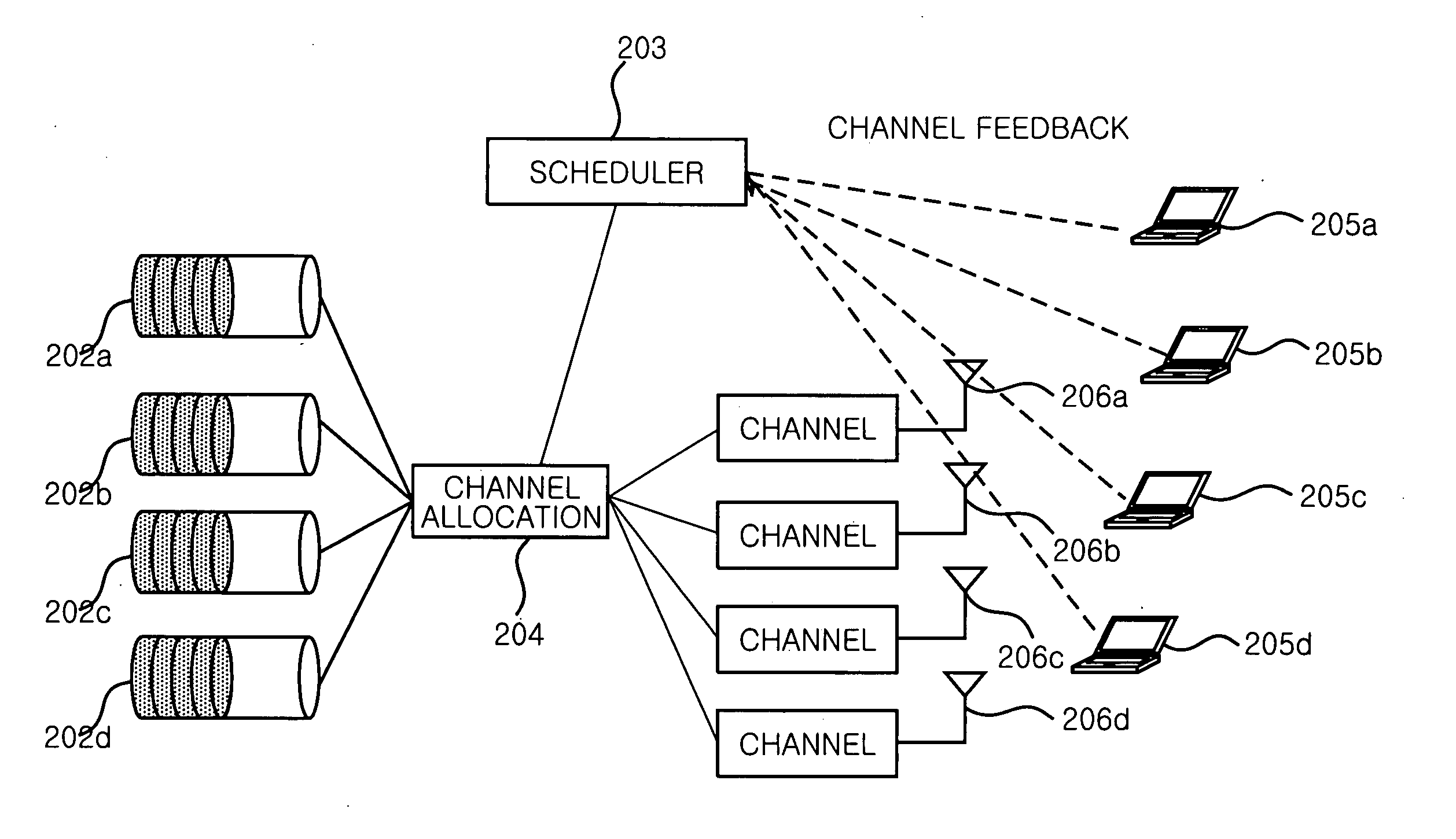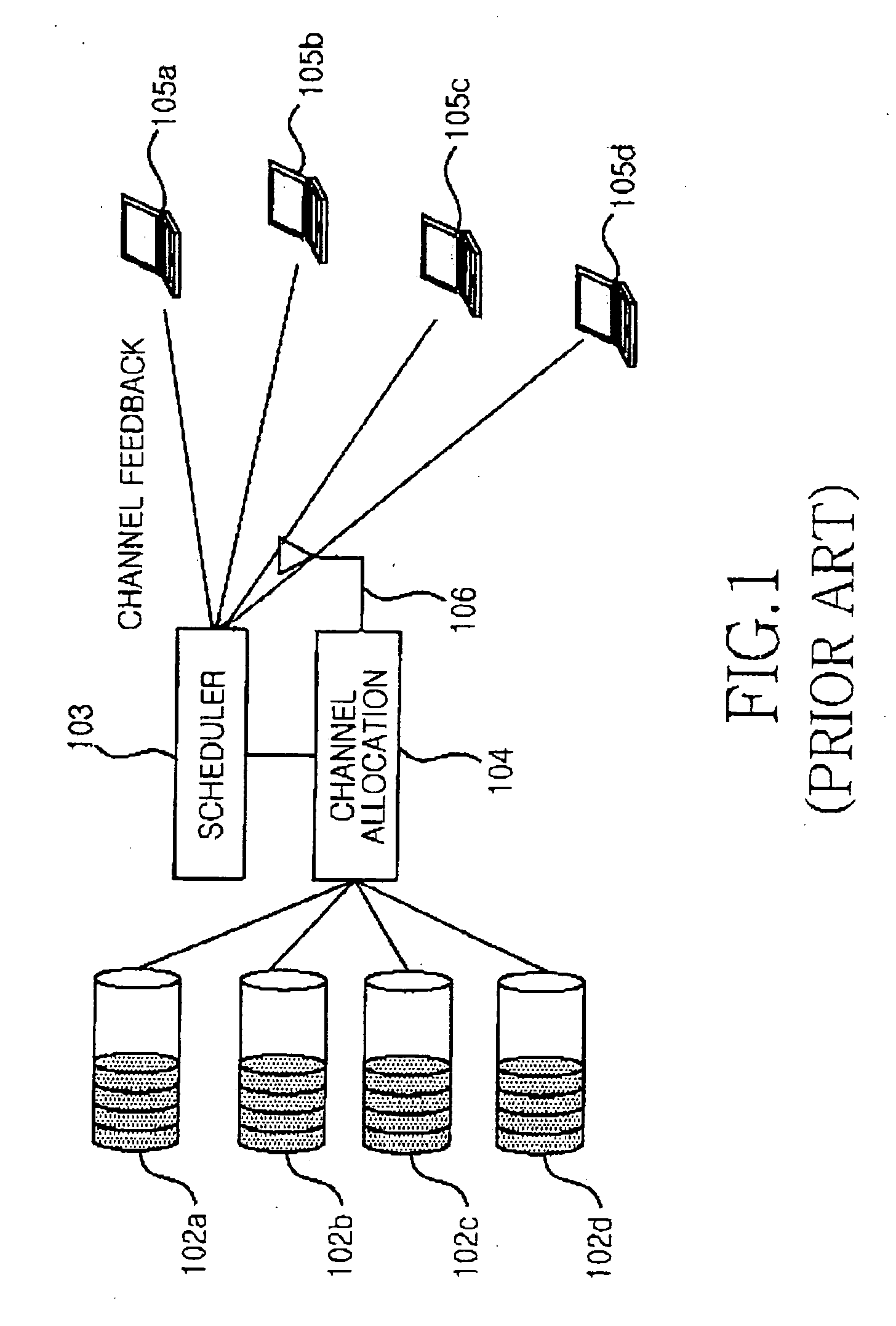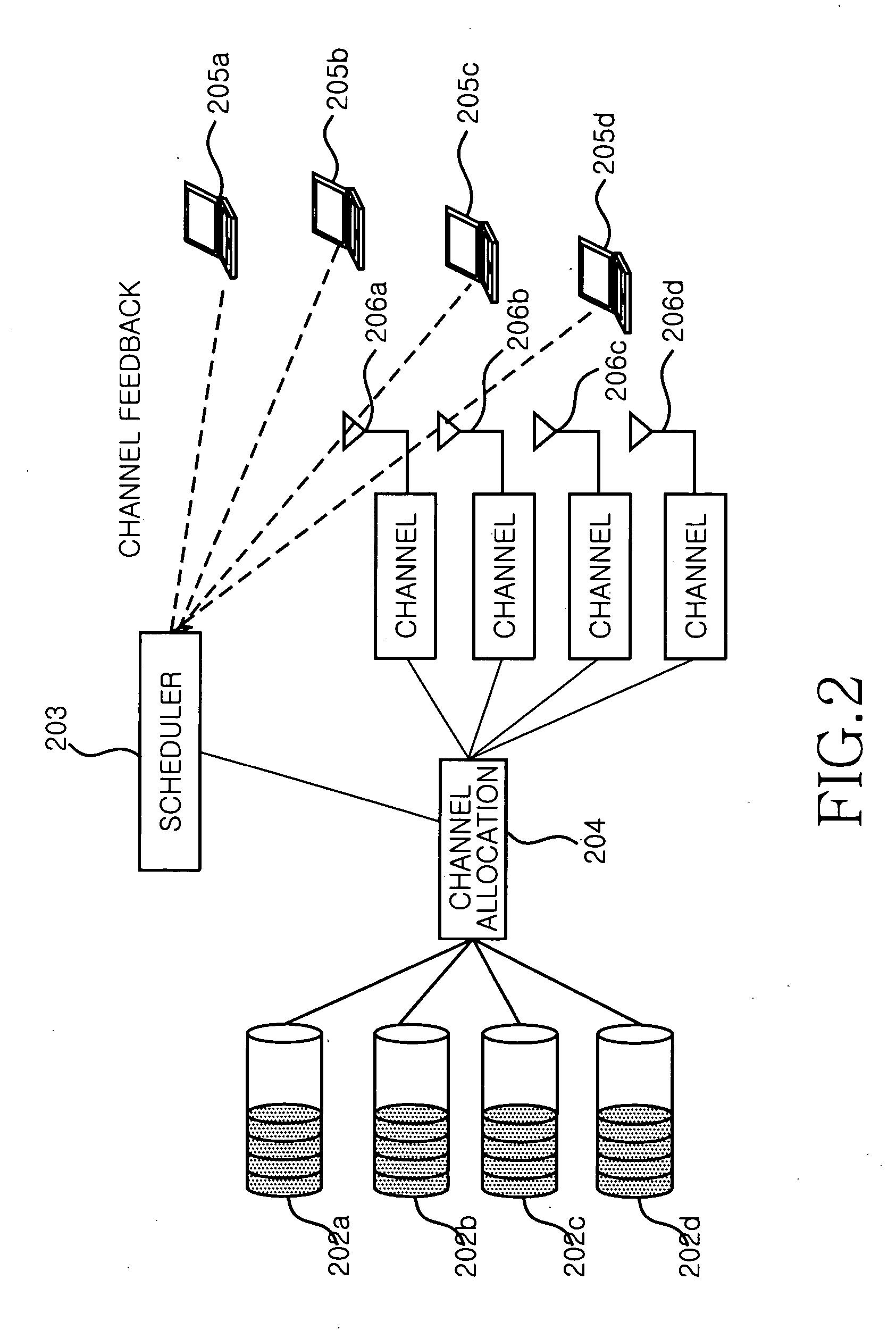Resource allocation method in a multicarrier communication system
a multi-carrier communication and resource allocation technology, applied in the field of mobile communication systems, can solve the problems of inability to implement practical implementation, limited high-speed data transmission, and computational complexity of optimal resource allocation is np-hard (non-deterministic polynomial-time hard), so as to reduce the computational complexity of resource allocation and efficient resource management
- Summary
- Abstract
- Description
- Claims
- Application Information
AI Technical Summary
Benefits of technology
Problems solved by technology
Method used
Image
Examples
Embodiment Construction
[0039] A preferred embodiment of the present invention will be described herein below with reference to the accompanying drawings. In the following description, well-known functions or constructions are not described in detail since they would obscure the invention in unnecessary detail.
[0040]FIG. 2 illustrates the configuration of a wireless communication system to which a resource allocation method performed in accordance with an embodiment of the present invention is applied. A scheduler 203 in a base station prioritizes mobile stations 202a to 202d, determines channels to be assigned to them based on feedback channel status information from them, and tells a channel allocator 204 the priority levels and assigned channels of the mobile stations 202a to 202d. The channel allocator 204 assigns data temporarily stored in transmission buffers 102a to 102d, which correspond to the mobile stations 202a to 202d, to the channels according to the priority levels and channel assignment in...
PUM
 Login to View More
Login to View More Abstract
Description
Claims
Application Information
 Login to View More
Login to View More - R&D
- Intellectual Property
- Life Sciences
- Materials
- Tech Scout
- Unparalleled Data Quality
- Higher Quality Content
- 60% Fewer Hallucinations
Browse by: Latest US Patents, China's latest patents, Technical Efficacy Thesaurus, Application Domain, Technology Topic, Popular Technical Reports.
© 2025 PatSnap. All rights reserved.Legal|Privacy policy|Modern Slavery Act Transparency Statement|Sitemap|About US| Contact US: help@patsnap.com



